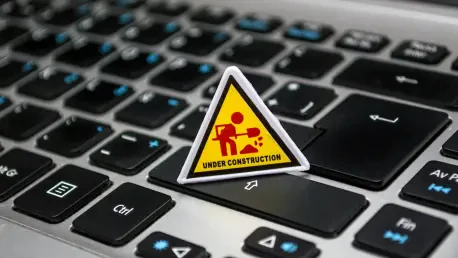Every workplace fatality represents more than just a number in a database; each stands as a community and family tragedy demanding urgent reform in safety practices and regulations. Despite advancements in occupational health and safety protocols, job-related injuries and illnesses continue to claim thousands of lives annually. Data from 2023 showed more than 5,000 fatalities in the United States and 381 in Canada due to occupational injuries. Meanwhile, the International Labour Organization’s global estimate puts work-related deaths at a staggering 2.6 million per year. These figures underline the urgent call for a transformative approach in workplace safety regulation. The conventional focus on strict compliance needs a profound shift towards enhancing organizational capacity for risk management and worker protection. Such a shift is imperative to safeguard lives, foster safer work environments, and ensure that every employee can return home safely at the end of the day.
Beyond Compliance: Understanding Regulatory Intent
Traditional workplace safety regulations have predominantly revolved around ensuring compliance, with businesses focusing on meeting set guidelines and avoiding penalties. This compliance-centric model has created perceptions that regulators are primarily concerned with quotas, citations, and shutdowns. However, the true intent behind regulatory frameworks is often misunderstood; the overarching goal shared by regulators, employers, and workers is to ensure that everyone safely returns home. By concentrating solely on compliance, organizations may neglect the broader picture that emphasizes understanding work processes and implementing necessary safety measures holistically.
Regulators aim to shift focus from a checklist mindset to a broader understanding of safety management that integrates actively into daily operations. This promotes a comprehensive understanding of potential hazards and the requisite measures to mitigate them effectively. By moving beyond the rigid enforcement model, the goal is to engage organizations in proactive risk management and capacity building for improved safety outcomes. Building organizational capacity for safety extends beyond ticking boxes and must incorporate knowledge-sharing, staff training, and continuous improvement processes to better handle the complexities and dynamic nature of modern workplaces.
Rethinking Risk Management Approaches
Emphasizing compliance often directs attention to identifying and eliminating hazards without fully considering the broader context of managing them. Recognizing that some hazards are inherent in many workplaces highlights the need for a more strategic approach to risk management. Not all risks can be eliminated, and thus intelligent and effective risk management becomes crucial for handling inevitable hazards while maintaining operational efficiency. The focus should be on adopting a risk-based approach where organizations assess hazards, prioritize them based on potential impact, and implement controls to safeguard workers.
Effective risk management involves a collaborative effort among all stakeholders, including employers, employees, and regulators, as well as utilizing innovative technologies and methodologies. Leveraging data analytics, predictive modeling, and real-time monitoring systems can significantly aid risk identification and control mechanisms. This not only helps mitigate risks more dynamically but also transforms how organizations perceive safety, fostering a culture that prioritizes learning and adaptability. By encouraging and supporting capacity-building initiatives, regulatory bodies can help organizations develop resilient systems capable of responding to and recovering from unforeseen challenges, ultimately enhancing safety readiness and employee well-being.
The Role of SHMS in Capacity Building
Safety and Health Management Systems (SHMS) hold the key to transforming safety culture within organizations by integrating safety across all operational aspects. Mature SHMS frameworks emphasize three main pillars: management commitment, worker involvement, and systematic hazard management. Management commitment is indispensable, as effective leadership lays the foundation for a culture that values and prioritizes safety over productivity targets. Consistent leadership engagement ensures that safety policies are not merely reactive but are ingrained within the organization’s ethos, driving lasting change.
Worker involvement is another critical component, empowering employees to be active partners in safety management. Facilitation of open communication channels allows workers to voice concerns, identify potential hazards, and contribute to crafting robust safety solutions. This inclusive approach enhances trust and aligns organizational safety goals with employees’ well-being, leading to more cohesive safety practices. Furthermore, systematic hazard management, as part of SHMS, involves structured processes for hazard identification, risk assessment, and the subsequent implementation of control measures. This systematic approach ensures an adaptive and responsive framework ready to meet emerging safety challenges while promoting continuous learning and improvement.
Fostering a Culture of Continuous Learning
Cultivating a culture of continuous learning is imperative in advancing workplace safety from a mere compliance focus to one of enduring capacity. A mature SHMS creates an environment where successes and failures are analyzed, fostering an attitude of continuous learning and adaptation. This learning-centric approach encourages organizations to dig deeper into the origins of issues rather than assigning blame, allowing for constructive feedback and modifications to prevent recurrence. With this mindset, organizations evolve into proactive entities, prepared to adapt to changing conditions swiftly and effectively.
A strong learning culture values transparency and accountability, where lessons learned are shared openly across all organizational levels. By involving employees in regular safety training and development programs, organizations facilitate knowledge acquisition that is critical to maintaining a robust safety culture. This growth-oriented framework not only improves job satisfaction and employee morale but also strengthens the organization’s ability to manage and respond to new risks. Ultimately, a continuous learning ethos becomes the cornerstone upon which safer workplaces are built, yielding organizational longevity and a genuine commitment to preserving life and promoting well-being.
Advancing Safety Through Collaborative Responsibility
The path to workplace safety transformation hinges on viewing safety systems as dynamic frameworks actively supported by collaboration among all stakeholders, including employers, workers, safety professionals, and regulators. This collective responsibility model advocates for a genuine partnership, uniting all parties towards the common goal of safeguarding lives. By creating a shared vision and fostering open communication, stakeholders can build the necessary capacity for risk management systems that not only meet compliance standards but also add value to organizational pursuits.
Adopting a collaborative model requires a shift from authoritative enforcement to guidance and support, allowing businesses to thrive within a culture of trust and mutual respect. Collaboration enriches the decision-making process, involving diverse perspectives leading to more innovative solutions that extend beyond mere box-ticking. In this shared responsibility framework, organizations are empowered to leverage insights gained from peers and safety experts, aligning operational objectives with overarching safety goals. This paradigm shift solidifies a foundation of resilience that reduces workplace incidents, ultimately protecting the workforce and honoring the legacy of those like Jaquan Pugh who suffered preventable workplace tragedies.
Building Safer Workplaces for the Future
Traditional workplace safety regulations have largely concentrated on compliance, with businesses keen on meeting prescribed standards to avoid fines and penalties. This focus has led to a perception that regulators prioritize quotas, citations, and shutdowns, overshadowing their real intent. Instead of merely enforcing rules, the ultimate aim of regulators, employers, and employees is the safe return home of workers each day. By centering solely on compliance, organizations risk missing the bigger picture, which involves understanding work intricacies and implementing safety measures more comprehensively. Regulators are now endeavoring to shift this focus from a checklist approach to a broader perspective on safety management that seamlessly integrates into everyday operations. This involves recognizing potential risks and enacting measures to tackle them effectively. Moving beyond strict enforcement, the intention is to foster proactive risk management and bolster safety capacity within organizations through knowledge-sharing, employee training, and continuous improvement, addressing the complex and ever-changing nature of modern workplaces.









